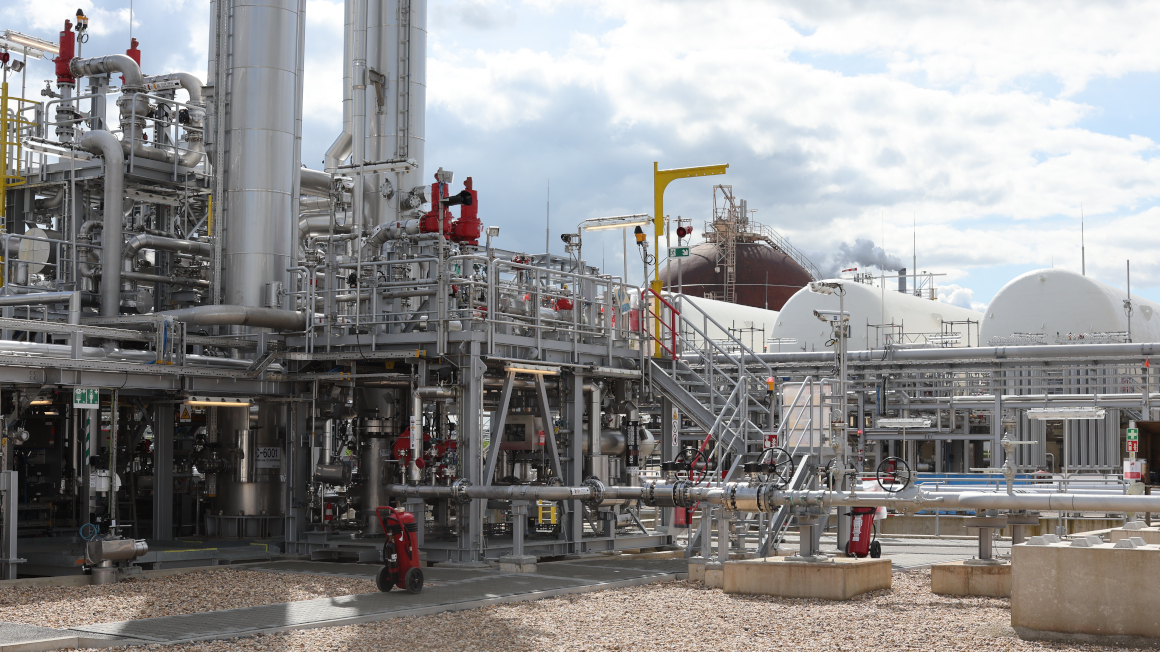Shell starts bio-LNG production on the Rhine
Shell Deutschland recently commissioned Germany's largest bio-LNG plant at the Energy and Chemicals Park Rheinland in Cologne. A liquefied fuel mixture of biomethane and fossil natural gas is produced here for heavy goods transport.

Bio-LNG is a mix of fossil liquefied natural gas (LNG) and liquefied biomethane. As biomethane is obtained from sustainable residues such as slurry and manure, its CO2 intensity is negative. The resulting mixture of bio-LNG from biomethane and fossil methane can therefore reduce CO2 emissions.
In mid-April, Shell Deutschland officially opened Germany's largest plant for the production of bio-LNG at the Energy and Chemicals Park Rheinland in the south of Cologne. Up to 100,000 tonnes of the less carbon-intensive fuel are to be produced here annually for heavy goods vehicles.
"This could fuel 4,000 to 5,000 LNG trucks a year and avoid up to one million tonnes of CO2," Shell announced. "The opening is an important signal for investment, job security and structural change – and therefore part of the energy transition in Germany," said Michael Kellner, Parliamentary State Secretary at the Federal Ministry for Economic Affairs and Climate Protection, at the opening of the plant.
Plant for the liquefaction of biomethane
"We want to serve the entire value chain for bio-LNG. To this end, Shell has already established a Europe-wide network of 90 filling stations for refuelling LNG trucks, including 36 stations in Germany. With the liquefier in the Rhineland, we are not only driving forward the transformation of the site, but also adding another important building block to the value chain," says Felix Faber, Managing Director of Shell Germany.
Biomethane can be produced from a variety of different organic wastes such as agricultural residues, municipal waste and liquid manure. The CO2 intensity of biomethane varies greatly depending on the source material and is between -88 gCO2/MJ and +50 gCO2/MJ. Fossil LNG – often referred to as grey LNG – has a CO2 intensity of 74 g CO2/MJ. By blending biomethane and fossil methane of different CO2 intensities, Shell says it is able to offer LNG fuel with an average CO2 intensity of 0 gCO2/MJ or less.
According to Shell, it wants to become a "net-zero CO2 company" by 2050 and is therefore further expanding its activities "in lower-CO2 molecules, such as in bio-LNG for truck fuels". The opening of the plant is an important building block for this.
Biomethane makes a convincing fuel
A recent study by the University of Hohenheim has shown that fuels from agricultural residues – especially biomethane – can be a promising and cost-effective alternative to conventional fuels. The investigations showed that using regeneratively produced bio-LNG as a fuel for lorries and agricultural machinery can reduce CO2 emissions by more than 65% on average.
bb/pg


